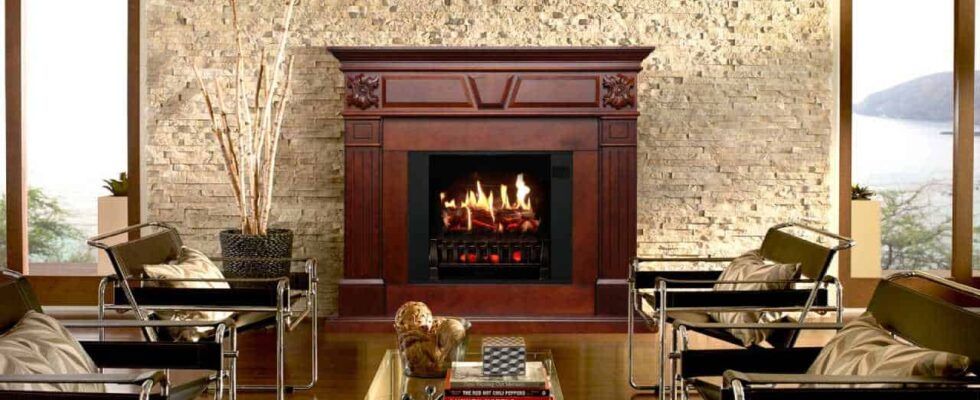There’s nothing quite like a fireplace. The warmth. The flickering glow. The way it turns a house into a home. But if you’re thinking about getting one, there’s a choice to make—traditional or modern?
Both have their strengths. Both have their drawbacks. And the best option depends on your home, lifestyle, and personal taste.
The Case for Traditional Fireplaces
A traditional fireplace is what most people picture when they think of a cosy living room. A brick or stone surround, a real wood-burning fire, and that unmistakable crackle as the logs catch flame.
It’s classic. It’s nostalgic. But it’s not always practical.
Pros of a Traditional Fireplace
- The real flame experience – Nothing beats the smell of burning wood and the sound of logs crackling.
- Adds character to a home – A grand fireplace with a mantel creates a centrepiece in any room.
- Works during power cuts – If the electricity goes out, a wood-burning fireplace will still keep you warm.
- Can increase property value – Buyers often love the charm of a working fireplace.
Cons of a Traditional Fireplace
- Requires maintenance – You’ll need to clean out ash and soot, plus get the chimney swept regularly.
- Less heat efficiency – Much of the warmth escapes up the chimney rather than heating the room.
- More effort to use – You’ll need to chop or buy wood, store it properly, and light the fire manually.
- Potential air pollution – Some areas have restrictions on wood-burning fires due to emissions.
A traditional fireplace is perfect if you love the ritual of lighting a fire and want a classic look. But if you’re after something low-maintenance and efficient, a modern alternative might suit you better.
The Case for Modern Fireplaces
A modern complete range of fireplaces come in different styles—gas, electric, or bioethanol. They offer the same warmth and ambience but with less hassle.
These fireplaces fit well in contemporary homes, where sleek designs and convenience matter. They don’t need a chimney, they’re easier to control, and they’re often more energy-efficient.
Pros of a Modern Fireplace
- Easy to use – Switch it on with a remote or a button. No logs, no matches, no waiting.
- Low maintenance – No ash, soot, or chimney to clean.
- More heat efficiency – Most of the warmth stays in the room rather than escaping.
- Safe and clean – No real flames (for electric models), reducing fire risks and emissions.
- Flexible installation – Many can be wall-mounted, built into media units, or even freestanding.
Cons of a Modern Fireplace
- Lacks the real wood-burning experience – No natural crackling or scent of burning logs.
- Relies on electricity or gas – Won’t work if there’s a power cut unless you have a gas backup.
- May not suit period homes – Ultra-modern designs can look out of place in traditional interiors.
Modern fireplaces work well for busy homeowners who want warmth without the work. If you value convenience and efficiency, this could be the better option.
Which One Should You Choose?
Your decision comes down to lifestyle, home style, and how much effort you’re willing to put in.
- Love tradition? A wood-burning fireplace will give you the most authentic experience.
- Want a statement piece? A grand traditional fireplace can add charm and value to your home.
- Hate cleaning? A modern fireplace means no ashes, soot, or chimney sweeps.
- Need efficiency? Modern fireplaces convert more energy into heat without waste.
- Live in a smoke-controlled area? An electric or gas fireplace will comply with regulations.
Final Thoughts
Both traditional stoves and modern fireplaces have their place. One brings nostalgia, the other brings convenience.
If you dream of chopping wood, lighting fires, and enjoying a roaring blaze, go traditional. If you prefer instant heat at the push of a button, go modern.
Either way, you’ll end up with a warm, inviting space—because at the end of the day, that’s what a fireplace is all about.


